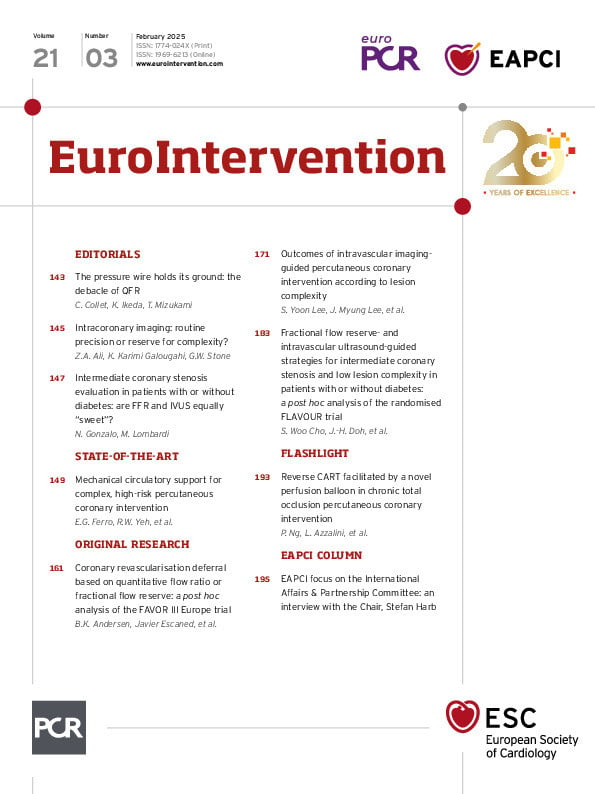Current clinical practice guidelines strongly advocate the use of invasive coronary physiology as a gatekeeper to guide coronary revascularisation in patients with intermediate stenosis. In contrast, the role of intravascular ultrasound (IVUS) to guide revascularisation has been established only in specific scenarios, such as left main coronary artery disease1. Diabetes mellitus, one of the most common comorbidities among patients with coronary artery disease undergoing percutaneous coronary intervention (PCI), is an independent predictor of adverse cardiac events following PCI2. The high-risk nature of diabetic patients characterised by more extensive and diffuse atherosclerosis with more vulnerable plaque characteristics and a tendency to progression makes them a particularly challenging subgroup3. Despite this, a head-to-head comparison between fractional flow reserve (FFR)- and IVUS-guided PCI in diabetic patients has not yet been thoroughly evaluated.
In this issue of EuroIntervention, Cho and colleagues report a prespecified post hoc analysis of diabetic and non-diabetic patients enrolled in the Fractional FLow Reserve And IVUS for Clinical OUtcomes in Patients With InteRmediate Stenosis (FLAVOUR) trial4. The FLAVOUR trial is a randomised, open-label, non-inferiority trial conducted across...
Sign up for free!
Join us for free and access thousands of articles from EuroIntervention, as well as presentations, videos, cases from PCRonline.com

